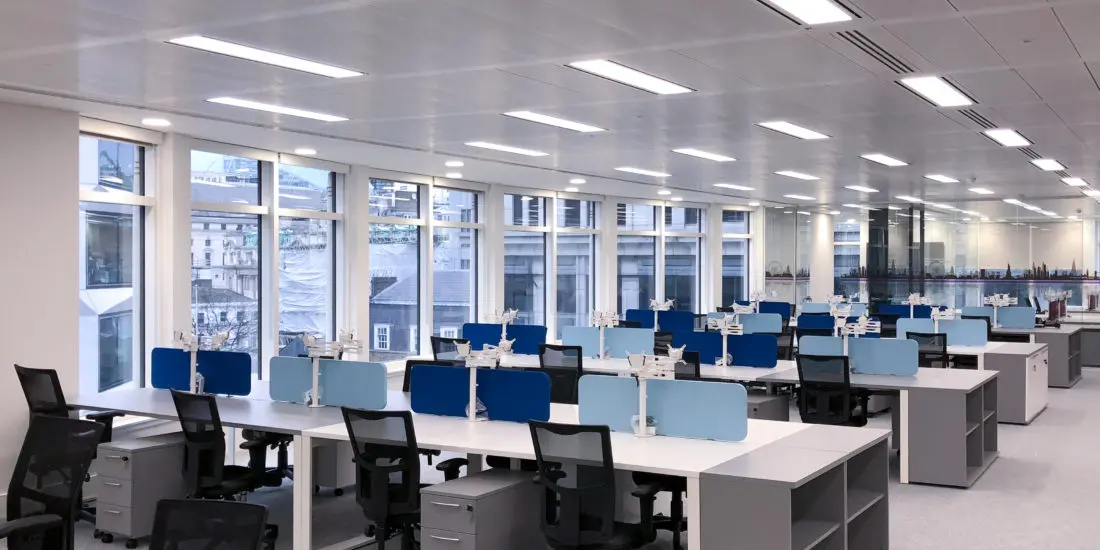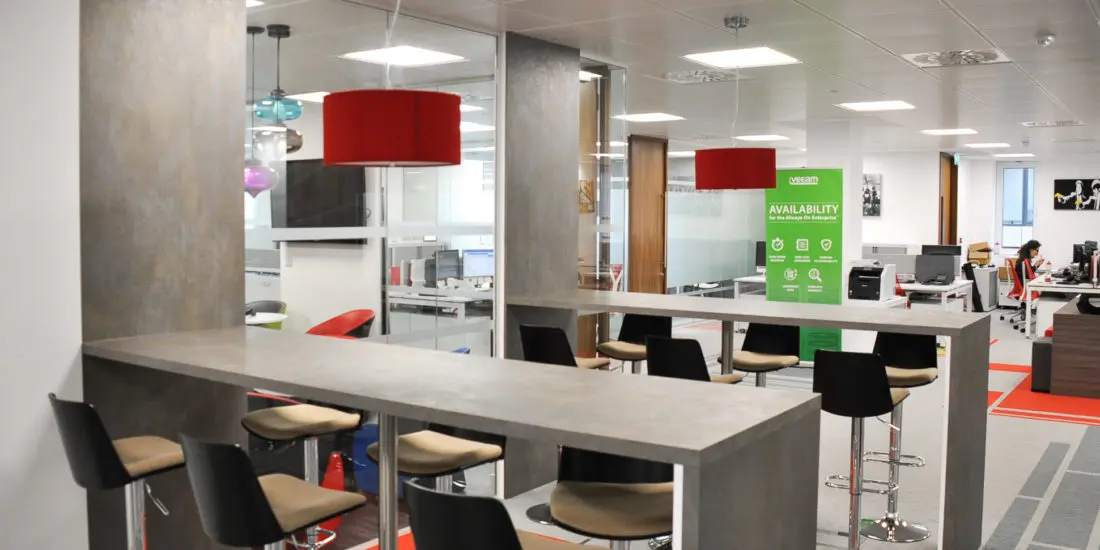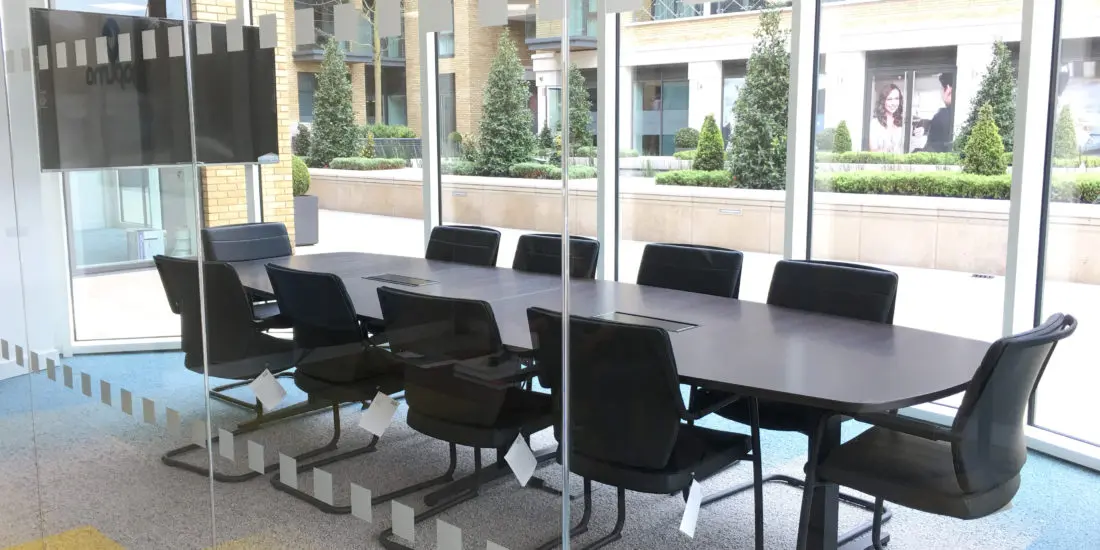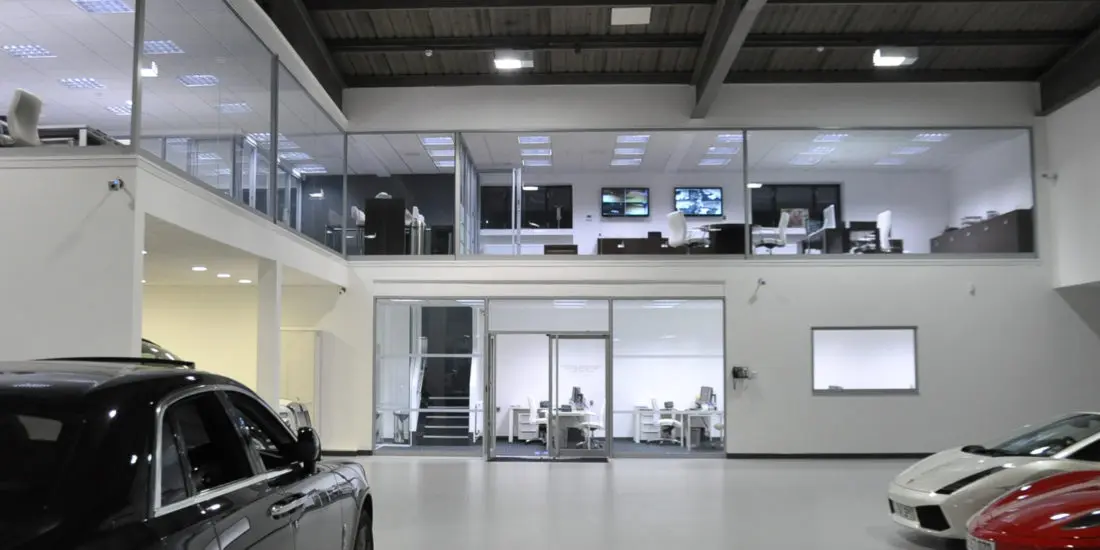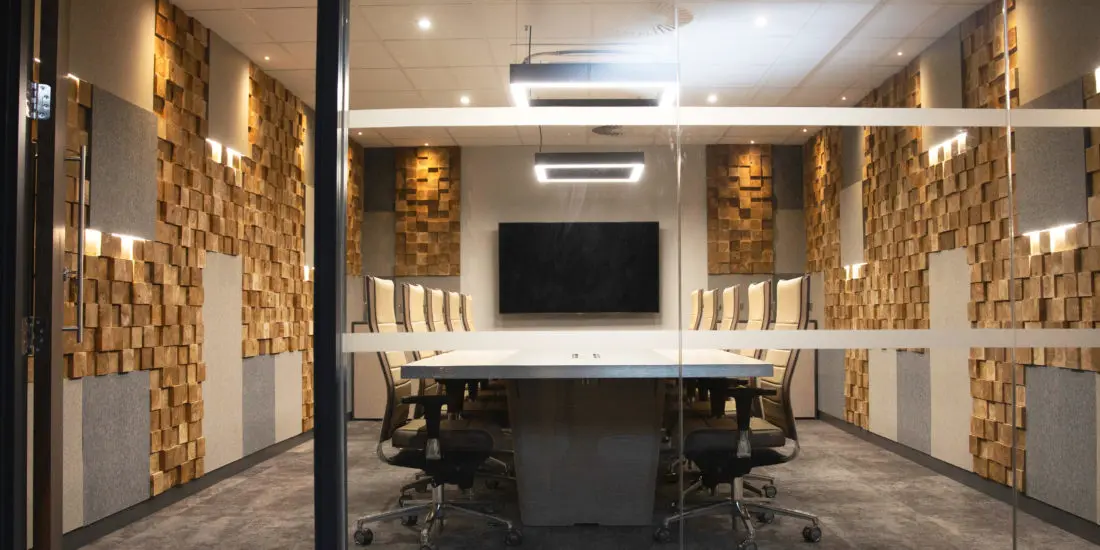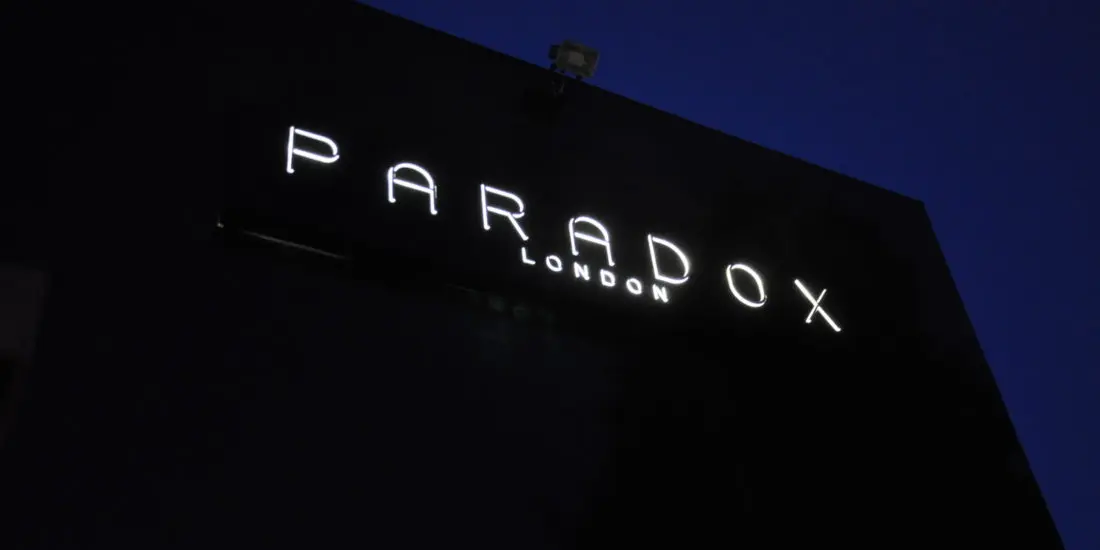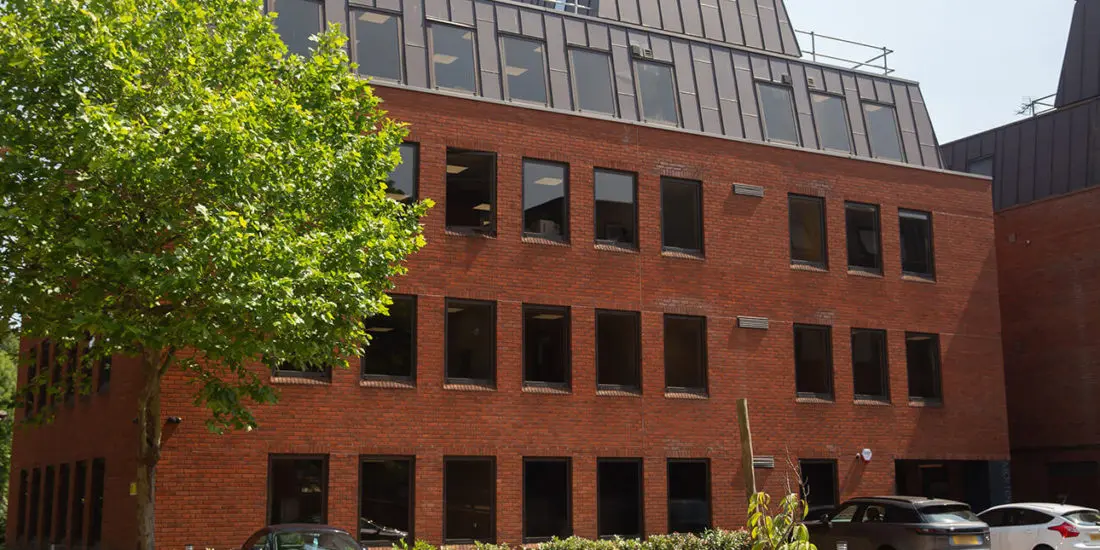When it comes to selecting the right office partition screens, the choice of
materials such as glass, fabric, and eco-friendly composites is crucial. These
materials not only influence the aesthetic appeal but also impact acoustic properties and workspace
interactions, making them a key consideration in your decision-making process.
One of the key strategies in choosing the
right office partition screens is to balance privacy with collaboration. This
can be achieved through smart choices such as strategic placement and varied
heights, which allow you to create different zones within your workspace.
Modern
modular systems, with their adaptability to changing
office needs, offer a sense of reassurance. Sound-absorbing materials further enhance this feeling by creating
focused work environments, ensuring your investment is future-proof.
Budget-conscious planners should weigh
initial costs against long-term durability and adjustability - key factors that
shape successful workplace changes.
Understanding Different Types
of Office Partition Screens
Office partition screens come in a
remarkable variety of styles and
configurations to suit different workplace needs. From sleek glass panels that create an open feel while maintaining
privacy to fabric-covered dividers that absorb sound, each type serves unique
purposes in the modern office environment. A thoughtful comparison of types
reveals that some screens feature mobile designs with wheeled bases, while
others require permanent installation.
When it comes to installation tips, business owners should consider factors like ceiling height, existing furniture
layout, and traffic flow patterns. Modular
partition screens have become increasingly popular thanks to their
versatility and easy reconfiguration options. Some even come with built-in whiteboard surfaces or storage
solutions - talk about working smarter, not harder! The key is selecting
partitions aligning with functional requirements and aesthetic preferences. For
enhanced workplace safety, fire-rated glass partitions can provide
resistance for up to 120 minutes while maintaining a modern, transparent
appearance.
Key Factors to Consider
Before Purchase
Before diving into a partition screen purchase, savvy business owners must carefully
weigh several essential factors that will impact their workspace for years to
come. A thoughtful analysis of the office's existing colour schemes can make the difference between a cohesive
professional environment and a visual mismatch that throws off the entire
aesthetic. Savvy buyers also consider practical
installation tips from the start, ensuring they won't face unexpected
challenges during setup. Additional key considerations include the office's natural lighting patterns, traffic flow
requirements, and acoustic needs.
The partition height should complement both the ceiling design and employees'
desire for privacy without creating a claustrophobic atmosphere. It's also
vital to consider future flexibility,
as today's evolving workplaces often require versatile solutions. Those seeking
enhanced privacy while maintaining an open feel should consider Crittall style partitions with their
distinctive industrial design and durable steel frames.
Material Options and Their
Benefits
Modern partition screens come in an
impressive array of materials, each
offering distinct advantages for different workplace needs. From sleek tempered
glass that creates an airy, open feel to sound-absorbing
fabric choices that keep conversations private, the options are truly
versatile. High-grade aluminium frames provide sturdy support while maintaining
a contemporary aesthetic.
For those seeking eco-friendly solutions, bamboo and recycled materials offer
sustainability without compromising style. Durability
ratings vary among materials, with polycarbonate panels leading the pack
for their resistance to impact and wear. Acrylic panels deliver crystal-clear
transparency at a more budget-friendly price point, while PET felt screens
blend acoustic performance with modern design sensibilities. The latest
composite materials even incorporate antimicrobial
properties, making them ideal for health-conscious workplaces.
Space Planning and Layout
Considerations
Successful partition screen layouts begin
with a thorough analysis of workplace traffic patterns and daily
operations. Space planners must consider not only the physical dimensions of
the area but also how employees move and interact throughout their workday. Strategic placement of partition
screens can improve workspace efficiency while maintaining essential sight
lines and creating natural pathways between departments.
The key is striking the perfect balance
between privacy and employee
collaboration. A well-planned layout might position lower screens near collaborative zones where teams
frequently interact whilst using taller partitions around focused work areas.
Department heads can be stationed at corner configurations that offer both
visibility and discretion. The most effective arrangements often incorporate a
mix of partition heights and configurations to support different work styles and encourage a lively office environment. For mid-sized offices, implementing collaborative spaces has become essential for
fostering teamwork while maintaining individual workspace boundaries.
Acoustic Properties and Sound Management
Managing office acoustics presents one of
the most essential yet often overlooked benefits of partition screens. Modern soundproofing
techniques have evolved considerably, allowing partition screens to reduce
ambient noise while maintaining an open-concept feel effectively. The strategic
placement of acoustic panels within
these screens can change a lively workspace into a focused environment.
Contemporary partition screens
incorporate innovative noise-reduction
materials like sound-absorbing foam,
fabric layers, and specialised acoustic cores. These elements work together to
minimise sound transmission between
workstations, reducing distractions from
phone calls, conversations, and office equipment. Some screens even feature
adjustable sound-dampening panels that can be customised based on specific
noise control needs. When combined with proper spacing and layout, these
acoustic properties create an ideal balance between collaboration and
concentration - proving that good office design is music to everyone's ears.
The effectiveness of these acoustic solutions can be measured using theNoise Reduction Coefficient to determine their
sound absorption capabilities.
Design Elements and Aesthetic
Integration
While functionality remains essential,
the visual appeal of partition
screens plays an equally important role in shaping office ambience. Modern office partitions offer diverse design possibilities that
seamlessly blend with existing décor while making bold aesthetic statements.
From sleek minimalist panels to
richly textured dividers, designers can select from an array of colour schemes
and texture combinations that complement corporate branding or create distinct
spatial zones.
Today's partition solutions go beyond
basic cubicle walls, incorporating elements like frosted glass panels, natural wood finishes, and even living walls adorned with plants. These
design choices can change ordinary office spaces into inspiring work
environments. The strategic use of colours and materials allows organisations
to create visual harmony while maintaining professional limits. Some innovative
designs even feature interchangeable
fabric panels, enabling seasonal updates or departmental differentiation
without major renovations. Integrating biophilic design elements into partition
screens has become increasingly popular as businesses recognise the importance
of connecting employees with nature in the workplace.
Budget Planning and Long-term
Value Assessment
Budget considerations for office
partition screens require a thoughtful balance between immediate costs and lasting benefits. When establishing a budget
allocation, businesses should factor in not only the initial purchase price but
also installation expenses,
potential maintenance requirements,
and future reconfiguration needs. Quality partition screens typically
demonstrate strong value retention over time.
Smart financial planning involves
evaluating partition materials based on their durability and flexibility. A
seemingly budget-friendly option might end up costing more if it needs frequent
replacement or doesn't meet changing workplace needs. Companies should consider
investing in modular systems that
can be easily modified or expanded. It's worth noting that premium partition solutions often pay for themselves through
improved workspace functionality and
employee satisfaction - making them a savvy long-term investment despite higher upfront costs. Consulting with office design experts during the planning phase can help identify
cost-effective solutions that align with both immediate budget constraints and
long-term business objectives.
Conclusion
Like pieces of a well-orchestrated orchestra, office partition screens harmoniously blend form and function to create productive workspaces. By carefully considering materials, acoustics, aesthetics, and budget, businesses can convert open spaces into focused environments that improve employee satisfaction and workflow efficiency. Smart partitioning choices serve as the backbone of modern office design, proving that sometimes the best solutions are the ones we barely notice.






